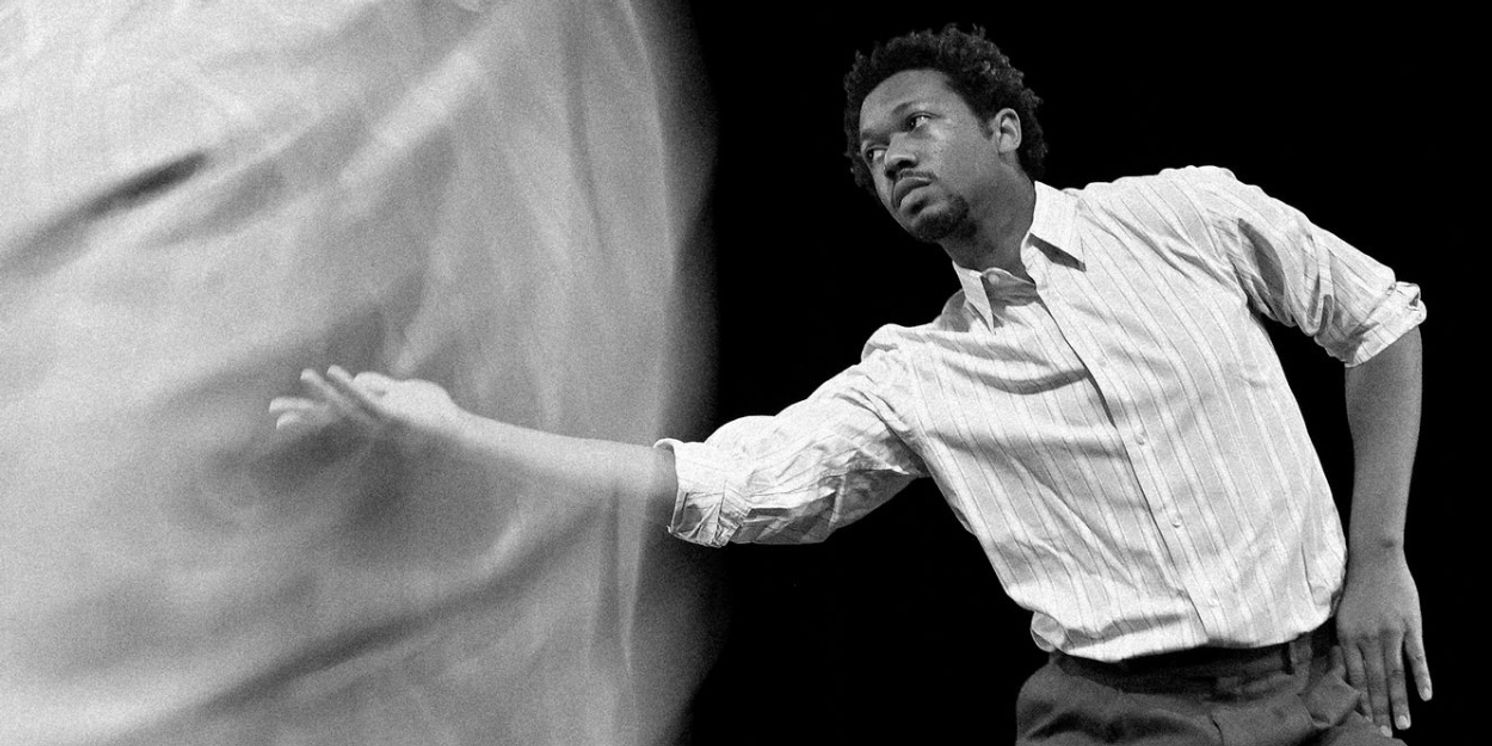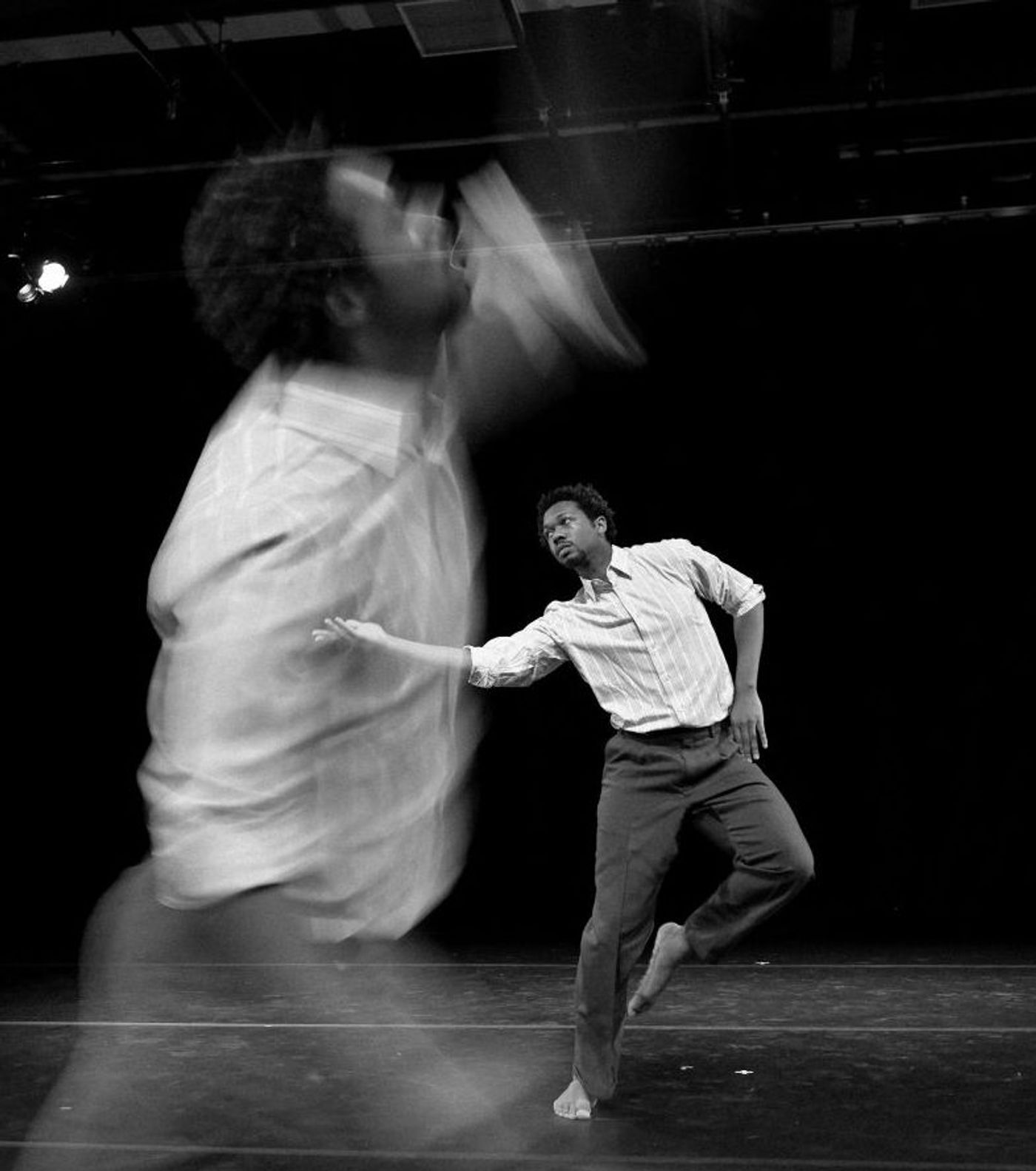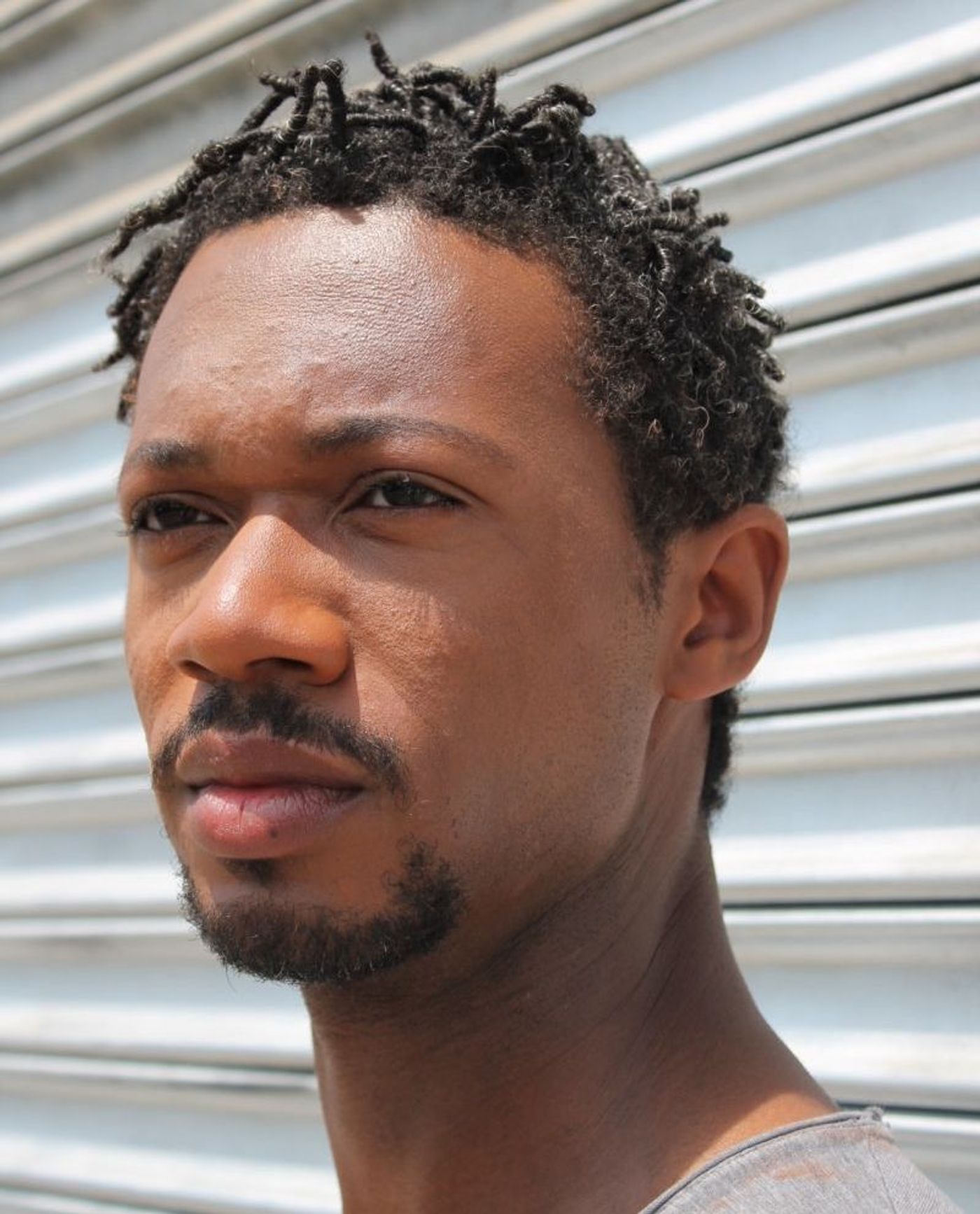Conversations with Creators: How Kyle Marshall Sees the Dancing Body as History
Conversations with Creators gives insight into the artist mindset of top industry creatives.

“As a choreographer, I understand the fragility and power of physical gatherings,” says Kyle Marshall, founder and artistic director of Kyle Marshall Choreography (KMC). “It is how our medium exists.”
Marshall is a choreographer, performer, and teacher who sees the dancing body as a container of history, an igniter of social reform and a site of celebration. Kyle is a former member of the Trisha Brown Dance Company, Doug Elkins Choreography etc., and Tiffany Mills Company. Kyle received a 2018 NY Dance and Performance Juried Bessie Award, a 2020 Dance Magazine Harkness Promise Award and a 2020 Bessie Honoree for his revival of Colored (2017). He has also received choreographic fellowships from Princeton University, Center for Ballet and the Arts, and residencies from Monira Foundation, 92nd st Y, CPR, and Bethany Arts Community.
How did you originally enter the world of dance?
Dance has been with me since I was a very young kid. I remember dancing in my living room, which was a place of joy and comfort. I come from a family of athletes and runners, so they saw physical activity and got excited. I was encouraged to start dance classes really young. I was five or six when I started ballet, tap, and jazz and then slowly got introduced to musical theater. Around middle school I was in the marching band and studied tap, modern and classical ballet. I was always interested in performing and doing solos, but my interest in choreography and directing really started in high school. I’d had a few opportunities to do talent shows and musicals, so I made a few dance numbers and a group piece with my friends. We rehearsed on Friday nights at a studio nearby (Inspira Arts) and I was very excited by that, at that age. I went on to Rutgers University, and going into college I was really interested in performing and choreographing.
Was there a single moment or project when you realized that this was your calling?
I feel like I always knew. I feel like there was something in me that was really driving me. I remember my first major performance in New York. I was performing a piece called Mo(or)town/Redux with Doug Elkins at Baryshnikov Arts Center. It was my first New York season, and I remember being really excited by it. I enjoyed the experience of performing and the focus of tech week.That performance was the first professional experience in New York that really shifted me. But even before that there were so many teachers like Ms. Lee at Rahway Dance Theater and Kimani Fowlin at Rutgers that gave me opportunities and the space to see that it was possible.
When did you originally start your own company?
The company officially started in August of 2014. We got fiscally sponsored and at the time, I was with New York Live Arts, and one of the dancers, Monica Gonzalez, built a website. We started applying for opportunities and showcases, and I began thinking about projects a little further out. This season, we’re celebrating our 10th anniversary.
What was the process like starting your company?
It took me some time to get settled in New York but I was lucky to have a few performing jobs at the time. In Jersey City I lived with roommates who were also dancers and artists, and we found space in our house to practice. They were some of the original people in my work and in the company. Then we rehearsed at a gym in Jersey City.
In December 2014 into the beginning of 2015, we received our first residency at the Jamaica Queens Performing Arts Center. We still lived in Jersey City at the time, so we had a two hour ‘underground journey’ by subway to get to Jamaica, Queens. It was a completely different world and culture. That was our first residency; here’s some space, here’s a little bit of money and we happily made the trip. We all commuted back and forth. After rehearsal I’d look up more opportunities, showcases, residencies, and think about building something over time. Instead of trying to make one piece for one showcase, I was making a piece and trying to show it in different places. We worked on different sections, built it and grew it, and were energized around doing the pieces more than once. It took a lot of effort at the time and we asked questions like, ‘How do we do this again? How do we begin the process with these ideas? How can you let things change?’ And how do we find ways of doing it and paying for it?

How was your company debut at The Joyce?
It was thrilling. It was a wild, beautiful and a hard week. It was the culmination of so much work, especially the company because we had been performing and working on these pieces for over a year. Everyone worked so hard and really showed up. I had the opportunity to perform at the Joyce a few times before with Trisha Brown Company and with the Elkins, so I had a familiarity of the energetic expectations for what is required. I was happy to have had those experiences and offer that space to the team. It was a personal journey, and I was so happy and felt lucky to be in the moment with my team and the work. It felt like such night and day from BAM in 2019 which was also a thrilling and momentous moment. By the time we made it to Joyce, we had developed a team and I had a partner who’s a part of our collaboration, Edo Tastic (Creative Director), and Madalyn Rupprecht (Company Manager). Everyone was involved, which felt really supportive.
How does your culture and roots inform your movement style and artistic voice?
My mother’s Jamaican and I grew up in a West Indian house. Being African American on my father’s side, there’s a lot of things that come up physically for me regarding my upbringing like movement, music, and also memory. I think about ways of moving, not just in dance, but in life. I think about my relatives and the people that raised me. There’s a way they have that I didn’t understand until I was in my 20s. I found that as I got older in the world and my body, I was so intrigued by how history keeps connecting us and how my history is unique to someone else’s. History informs how I see the world, how I interact, how I embody, and even what foods I like. All of that informs my artistry, tools, and body. As an artist, I was curious how culture shows up, gets worked with, questioned, and processed. I spent a lot of time focusing on the Black dancing body and what that means and feels like, and what it goes through. For me, that was really a grounding and necessary place because I had a lot of questions of myself as a Black man and Black person. I didn’t know how to answer those things if I didn’t investigate my own history and culture. For me, it’s a place of ongoing growth and change.
How does that tie into what you’re working on right now?
I'm working on a trilogy of pieces right now to the music of Julius Eastman who's a Black gay minimalist composer. I'm sitting with someone’s work and legacy who felt misunderstood or in a certain kind of margin. It made me question how I can identify or not identify with that. How does Blackness expand? How does it hold the many different perspectives? We are many different kinds of people, there’s no one definition. For me, that’s an ongoing place of curiosity and discovery. It’s a ground that continues informing a lot of ways I work, what I read about, and how I think about my own future and people moving forward.
When you enter the choreographic process, are you hoping to communicate a specific statement or something in particular? How would you say your process accumulates in terms of research, movement, and workshopping?
My dances come from an idea, or a concept I'm curious about. Sometimes that’s grounded and specific, for example the piece Onyx was about the Black and brown origins of rock and roll, which we performed at the Joyce. That’s what I was curious about; I was researching, reading biographies, watching videos, listening to music and artists I’d never heard of. I was looking at movement culture coming out of the pandemic when Tiktok was getting really popular. I was thinking about dance crazes from the 60s and Tiktok dances, and the relationship of viralness with timing and music. I was in academic research thinking about these artists and what they went through. Then, in the studio, I was by myself first, listening to the music and responding. I find it interesting how research informs movement and informs the composition. I have to take in the information and then feel it physically. Then the physical information is what we focus on in the rehearsal process. Sometimes I share a lot, sometimes we talk, but often we are finding out how the body reacts and sits with information or stimuli.

Can you share moments of your first evening-length work in-process?
When working on the piece Femenine, I did a lot of research around Julius Eastman's music, biography, and his life. I went to Buffalo, NY, where he had his early career and grew up. My partner Edo and I took a trip there to experience being at his university and to go through his archives, looking at his materials that are there. It was so informative to get a sense of him; we saw photos, how he moved, how he stood with or around certain groups of people, and how he was as an individual. That information informs how I might embody or create a phrase. Thinking about the piece Femenine, I began questioning, how do I as a gay man connect with the feminine experience or feminine energy? How do the femme and female identifying folks in the company sit with that idea as well? It becomes a conversation which informs the movement, that informs the choices I give to them. As they embody what’s being asked, it’s different for each person. The physical research is finding balance in the studio, owning the body, honing the craft and getting specific on the movement and quality, and being clear on what’s supposed to happen. The reason people interact with each other is also informed by the process of thinking about the feminine and queer experience and communities. How do people hold each other? How do they want to be seen? It’s a space for us to try it, and ask, ‘do we want to be seen gently? Do we want to be touched softly?’ So we’re trying it out physically and finding partnering that connects us. That’s how the idea informs the material and structure. For me, it feels very connected, and can sometimes be a little complicated or unclear until it isn’t. It sometimes takes time, but to me, what else is there to do than make the work and be in it? I’m willing to ask certain questions and see what comes up, and let it be a conversation, even though there is a direction or certain idea I’m trying to get to.
Is Femenine your first full length evening length work?
Technically, yes, it will be 70 minutes, so it’s our first full evening length piece we’re developing. We've been working on the piece for over a year. We recently got awarded a National Dance Project Grant and a National Performance Network Grant. So I'm really happy and excited about the development of the piece. We'll be performing it this season along with two other pieces by Julius Eastman. One’s called Joan, and one’s called Gay, which I'm premiering in Boston this November.
Can you give us a glimpse into the studio with your dancers?
That’s a good question, because I think it's different for everyone. For our typical day, we start with a physical warm up and some improvisation. We've started to do a company class type structure at the beginning of rehearsal. After that, we dive into movement. With my experience dancing with Trisha and Doug, once the body's warm, you’ve got to use it, so it's time to dance. We start with phrase work, typically with the more rigorous movement. Maybe we're building something, maybe we're structuring something, maybe we’re doing it through conversation. From what the dancers tell me, it is a physically focused process, and conversation will happen towards the end. We save deeper conversation towards the end, especially when we're in residency. We tend to do two sessions, and the second half of the second session trying to be in process in a different way, such as talking, watching a documentary or going through a short reading. That, to me, is the best time to do it, because I appreciate the physical nature and momentum of what we do. The body is a container of history, and the body has history; yes we can talk about it, but I’m pretty sure you already feel it.
Moving forward, what do you hope to achieve and continue communicating through your artistic voice, company, and work?
I'm really interested in building a company that feels supportive of people and of the rigorous work that we do physically, mentally and spiritually. I'm interested in making dances that continue to be layered and nuanced. I am curious and excited about collaboration and bringing in other non-dance mediums into a dance space and see what those other influences do to inform us as people, as artists. I want to create a space for artists who are critical of the world and have perspective and are great people to work with. I really value that and it’s important to me. I want to make dances that are challenging, fun, and rigorous. I don't want to feel limited to subject matter. I know where I’m rooted from and who I’m rooted to; the Black and brown experience is important and expansive, and goes on forever, so whether that’s collaborating with scientists, musicians, a band, or continuing to build work in a relationship with my partner Edo (Creative Director), I think expansively about what can happen.
What’s important to you regarding the future of dance?
I think live audiences and live performances are important. It does not happen if we're not in the room. Yes, it can happen with tech. Yes, videos are made in collaboration, but the sharing with the audiences feels different. We can do it with AI, yes, but are we there yet where we want to watch a computer's inspiration? I don’t know, it's complicated.
I think there's something necessary about dance, and necessary for its humanity. I could be wrong, but I think because it has to involve people; it's going to be hard to let go of that. If we've gotten through the isolation of Covid and still moved on, we can get through something else. I think the form will continue to exist in some way. Our ancestors danced, making rhythms with their palms, pounding the dirt with their feet in Africa. So I don't know why it would stop, and I don't want to be someone who thinks that my form will stop. I want to think about how it is moving, because it always is. How it moves forward, how we can embrace new technologies and new ways of collaborating and new ways of communicating. I think there's ways that dance connects people internationally, locally, and around the block. Most importantly, I'm here for it, and I try to stay open adn curious.
Photo Credit: 1st Photo: Lisa Hibbert, 2nd Photo: Edo Tastic
Videos

